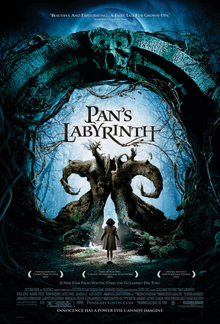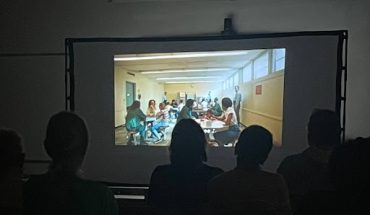Co-Written by Fourth Estate Online News Reporter Christopher Morrison
Cinema is a magical international art form that not only resonates with most cultures, but also allows for international audiences to experience the different cultures of the world through the narratives international films present. It is safe to say that without the contributions and developments of foreign filmmakers over the past century, film would nowhere be as magical and entertaining as it is today. In honor of Mason’s International Week, here is a list of some of the best international films that you should definitely see, provided by Fourth Estate’s online news editor Vernon Miles and news staff writer Christopher Morrison.
Italy
Chris: “Il Buono, Il Brutto, Il Cattivo”
(The Good, the Bad, and the Ugly)
“Il Buono, Il Brutto, Il Cattivo” stands as one of the greatest achievements in Italian and international filmmaking through its critical role in establishing the Italian-Spaghetti Western sub-genre. “Il Buono, Il Brutto, Il Cattivo” tells the story of three rival cowboys gunslingers in search of hidden American Confederate gold during the violent Civil War events of the American southwest. From director Sergio Leone’s signature camera shots during epic gunslinger showdowns to his implementation of the iconic whistling score throughout his “Dollars Trilogy,” the film continues to live on as an international cinematic achievement.
China
Vernon: Triad Election
A sequel to the 2005 film “Election,” Triad Election is one of the greatest organized crime movies of all time. The film follows Jimmy, a side character in the original film, attempting to build a legitimate business to separate himself from the Wo Shing society, one of Hong Kong’s deadliest triads (Chinese organized crime). However, a Chinese intelligence agency tells Jimmy they won’t allow him to conduct business unless he runs against his old boss and throws his name into the ring for Chairmanship. Triad Election is a movie that maintains Hong Kong cinema’s violent and bloody crime legacy, but marries it with a deeper conspiracy and emotional conflict. Jimmy is a character constantly torn between his business ambitions and his criminal origins, and through this lens the film never compromises in its view of Chinese organized crime.
Chris: Raise the Red Lantern
One of the biggest criticisms of the inequality and mistreatment of women in China is by internationally celebrated Chinese director, Yimou Zhang. “Raise the Red Lantern” is set in 1920’s China where young Songlian is forced to marry into the wealthy Chen family after her father’s death. In the Chen compound, there are three other wives of Chen and every night her husband will choose one of the wives to sleep with. Through the ferocious competition between the wives as well as the implementation of constant plot twists, the film is both an astonishing social critique and an emotional powerhouse.

“Raise the Red Lantern” challenges ideas about the treatment of women (photo from Just Angels).
Japan
Chris: Spirited Away
One of the most heartwarming films developed by the great Hayao Miyazaki, “Spirited Away” tells the story of a young girl and her family who accidentally wander into a spirit-infested world where witches rule bathhouses, people turn into pigs and protecting your identity is key. Miyazaki portrays this magical story through his beautiful signature: his animation. The film also does an exceptional job of employing hidden criticisms against the constant destruction of nature and the environment. All in all, identity is everything. It will hold you true to yourself as well as aid you in finding your way home.
Vernon: High and Low
Though Kurosawa is more commonly known for his samurai pieces that defined Japanese cinema, his best work is the 1963 police procedural “High and Low.” The film follows a child-abduction case that starts with Japan’s new business elites, and then slowly works its way down into the middle and lower classes and eventually to the dredges of society and to people desperate enough to commit unthinkable crimes. The film is marked with Kurosawa’s trademark epic scope, but High and Low’s unrelenting suspense and some scenes of truly incredible cinematography make it the stand-out of the acclaimed Japanese director’s career.
Germany
Chris: M
The psychological thriller that not only aided international cinema’s transition to talkies, but also created a timeless work that continues to keep the audience on its toes. Director Fritz Lang’s “M” tells the story of a psychotic child murderer on the loose in an urban setting while the police force struggles to bring him to justice. Through the implementation of endless symbolic camera shots and iconic sound motifs, Lang demonstrated the power of cinema as it continued to evolve through new technologies and genres. Be forewarned, not only will you see into the depths of an insane serial killer but you will also have the tune, “In the Hall of the Mountain King,” mercilessly stuck in your head for the rest of the day.

“M” first set the stage for talkies and thrillers with its innovative cinematic techniques (photo from The Geektastics).
Vernon: Goodbye, Lenin
While it’s arguable whether “Goodbye, Lenin” is the best German film, it is certainly one of the most German films. Like “The Lives of Others” three years later, “Goodbye, Lenin” is part of a German movement confronting the nation’s troubled and divided past. An East German woman falls into a coma before the Berlin Wall is torn apart and wakes up shortly thereafter to a world where her old country no longer exists. Her son is tasked with keeping her away from any shocks, which involves an increasingly elaborate plan to, at least in her apartment, keep East Germany alive. “Goodbye, Lenin” is a hilarious, but often heartbreaking look into two generations whose lives were changed overnight.
French
Chris: Le Voyage dans la Lune (Trip to the Moon)
One of the greatest film pioneers of all time, Georges Méliès, made hundreds of silent French films with narratives and film techniques that surpassed the times. “Le Voyage dans La Lune,” arguably his most famous work, tells the story of a group of astronomers who travel to the moon and encounter a primitive lunar species. Méliès demonstrates his best in this short 13-minute silent film through his effective use of editing to forward the plot as well as to emphasize the importance of story in cinema. Although many of his films were lost and destroyed, this film survived and has continued to explain that the power of movies always falls back to the narrative.
Vernon: Amelie
There’s something extraordinary about “Amelie.” Director Jean-Pierre Jeunet and lead actress Audrey Tautou craft a romantic comedy about an extremely shy waitress who embarks on a personal mission to anonymously improve the lives of everyone around her. Like its protagonist, the film is quirky, whimsical and thoroughly earnest. Amelie is an extraordinarily multifaceted character who covers up anxiety and depression with her good deeds. The film slowly builds a supporting cast of dysfunctional misfits, making perfect use of every member of its diverse cast without losing its focus on its eternally charming hero.
Russia
Vernon: Stalker
A list of top 10 Soviet films would easily be at least half works by director Andrei Tarkovsky, but “Stalker” is his best. A writer and a professor of science are escorted by a local guide into a mysterious region called “The Zone” where the natural laws of the outside world no longer seem to apply. Stalker joins Tarkovsky’s often contradictory wonder at the magic of the world with his deeply ingrained Russian cynicism.
Spain
Chris:El Laberinto del Fauno (Pan’s Labyrinth)
An imaginative young girl, a ruthless army captain and a mysterious faun. “El Laberinto del Fauno” stands as director Guillermo Del Toro’s most bizarre and beautiful film to date as the narrative focuses on a young girl in 1944 fascist Spain who interacts between a bizarre magical world of mythical creatures and the violent traumatic reality of Spain. The film’s narrative structure is extremely unique as viewers witness the grand collision between the bizarre mythical world and the violent dark reality in which the young girl lives in. Through a boatload of unsettling visuals and various narrative interpretations, the audience’s eyes are hopelessly glued to the screen.

“El Laberinto del Fauno” or “Pan’s Labyrinth” offers a bizarre yet captivating story set in a mythical landscape of Spain (photo from Wikipedia).
Brazil
Chris and Vernon: Cidade de Deus (City of God)
C: “Cidade de Deus” is a magnificent film that presents an honest narrative that reveals all the horrors and violence of Brazilian favela gangs between the 1960’s and the 1980’s. Having been based loosely on real events, the plot follows the evolution of organized crime in Brazil as gang violence, drugs and all out urban warfare consume Brazilian society. The film captures the true sense of entrapment and failed dreams as characters try and fail countless of times in escaping the violent organized crime lifestyle. Its critique of the corruption in the Brazilian law enforcement as well as its inability to completely end this ongoing problem of gang violence remains one of the film’s most dominating aspects.
V: To call “City of God” a crime drama does it a grave disservice. The film is a coming of age story set in a Brazilian favela overrun with drugs and rampant violence. “City of God” is equally heartwarming and disturbing, following a group of children that grow up into very different lives and in one way or another try to grow beyond their circumstances. While the overarching story is incredible on its own, the series of smaller scenes give every seemingly minor characters full and rich stories that weave an unforgettable portrait of the South American slums.

“Cidade de Deus” paints a grim but honest picture of gang violence in Brazil (photo from Wikipedia).
(Featured photo from Flickr)




